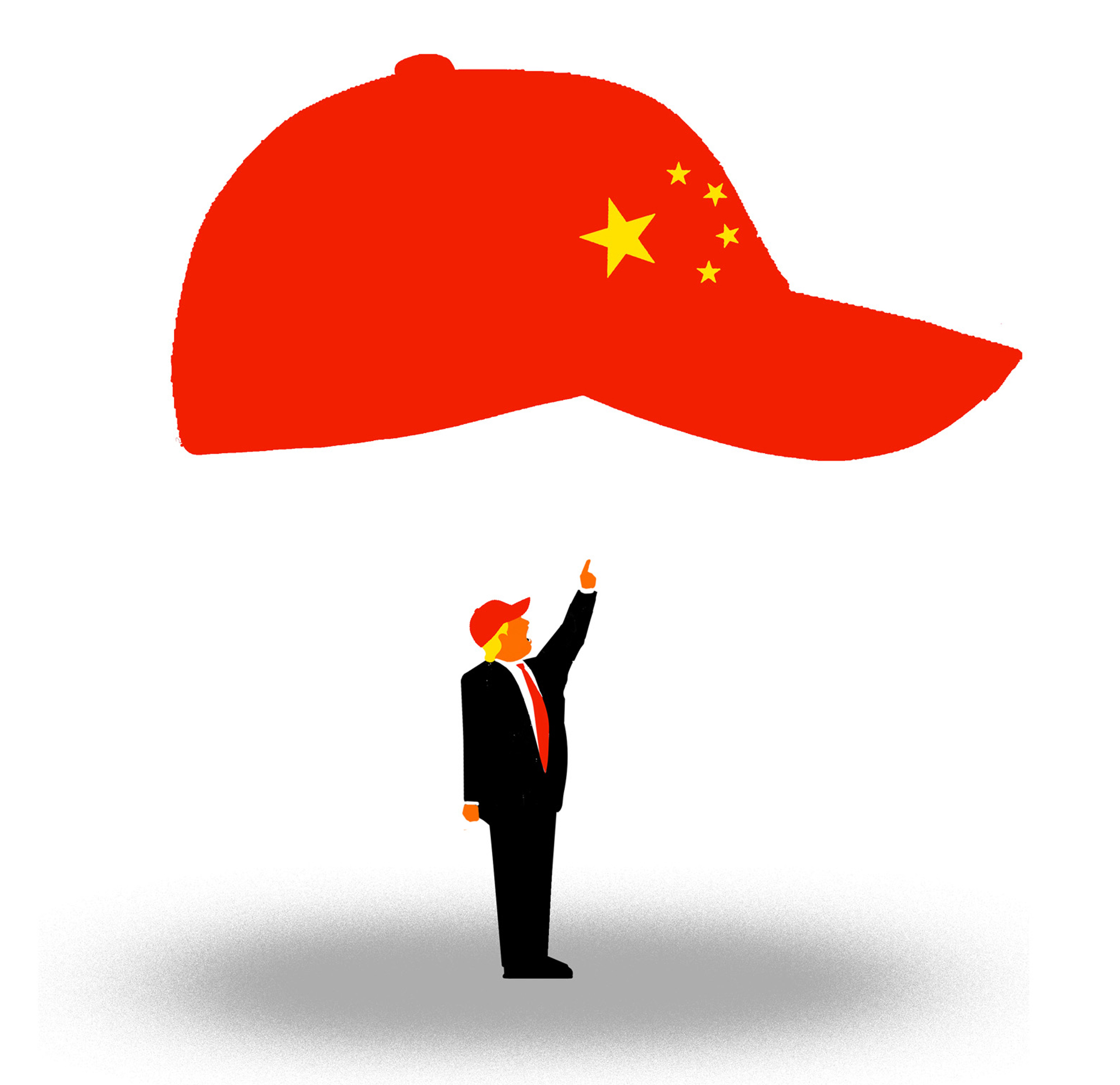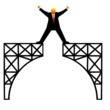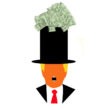During his volatile presidential campaign, Donald Trump griped about the U.S. trade deficit and criticized U.S. trade agreements. He called the North American Free Trade Agreement “the worst trade deal the U.S. has ever made.” NAFTA reduced trade barriers (especially tariffs) between Canada, Mexico, and the United States. He opposed the Trans-Pacific Partnership, an attempt to set rules for trading services among 11 Pacific nations and reduce intellectual property theft by China. Scuttling TPP was one of the first actions taken by President Trump once in office.
Trade agreements, such as NAFTA and TPP, are essentially peace treaties that seek to prevent and resolve trade wars. This year President Trump initiated a trade war that he thinks is necessary and seems to relish. The president even appears to believe that the United States could win a trade war. As he tweeted on March 2, “[When] we are down $100 billion with a certain country … [and] don’t trade anymore—we win big. It’s easy!”
Contemporary trade wars are fought primarily with tariffs, or taxes, on imported goods. Like all taxes, no one likes to pay them. And like a hot potato, everyone tries to pass them to someone else. But at some point the music stops, and someone will get stuck paying the tax.
In January, President Trump fired the first shot in our current trade war, imposing tariffs on imported solar panels and washing machines. At the end of March, he announced a 25 percent tariff on all U.S. steel imports and a 10 percent tariff on all aluminum imports. On June 14, he announced tariffs on $50 billion of Chinese goods in response to China’s intellectual property thefts; most of these became effective on July 6. China retaliated by imposing tariffs on U.S. goods; President Trump then doubled down by announcing he would likely put tariffs on another $200 billion of Chinese goods starting sometime in September.
The president went even further on July 20. He announced that he is considering imposing tariffs by the year’s end on all Chinese goods entering the United States. If this does come to pass, it will mark not the end of a trade war with China but the beginning of its next stage. Even if all goods coming into the United States are taxed, the president can still escalate the war; tariffs can be increased—from 10 percent to 25 percent, then to 50 percent, and even to 100 percent or more.
As economic losses mounted and political opposition to the trade war grew, the president retreated a bit. On July 25, President Trump and European Commission President Jean-Claude Juncker announced an apparent truce in the U.S.-Europe trade war. The president would impose no new tariffs on European goods. In return, Juncker promised that Europe would purchase American soybeans and natural gas. Since the European Commission can’t force firms to buy American products, it is not clear how this promise could possibly be kept.
This truce looks like a bandage put in place to avoid a massive defeat for the president and the Republican Party in the November midterm elections. After the election, we will likely return to a mushrooming trade war that continues to makes no economic sense. Contrary to the president’s claim, trade wars are not easy to win and result in many casualties, even for the winning side. They are bad for economic reasons. They are bad for geopolitical reasons. They are bad for President Trump, as well.
Trade wars should be fought only as a last resort. One reason for this is that a large chunk of the tariffs will get passed along to consumers, raising prices for the goods and services that middle-class families purchase. Additional negative economic effects will follow. With inflation already approaching 3 percent, the Federal Reserve will be tempted to increase interest rates more quickly to keep inflation in check. This will squeeze families already strapped by debt, make it more expensive to borrow money, reduce consumer spending, and slow economic growth.
A bigger problem is that trade wars destroy jobs. The first fatalities of President Trump’s trade war were the 60 workers laid off on June 15 by Mid Continent Nail Corp, the largest U.S. nail manufacturer before the trade war began. Mid Continent uses foreign steel to make nails. Trump’s steel tariff sharply raised its production costs, and the company had to raise nail prices in order to remain profitable. A 50-pound box of nails went from $27 to $32.50. Because foreign nail manufacturers are not subject to the same 25 percent tariff on steel, foreign firms can now sell nails in the United States for much less than Mid Continent. The outcome was inevitable—Mid Continent’s orders fell by 30 percent from retailers like Lowe’s and Home Depot and fell overall by more than 50 percent from a year ago. The firm appears near death; another 400–500 workers will lose their jobs if the firm folds.
Ironically, Harley-Davidson is another casualty of Trump’s trade war. Trump once called the firm a “true American icon—one of the greats” and thanked them for making things in America. Harley, with 5,700 U.S. employees, encountered a double whammy—higher steel prices for making motorcycles and a 25 percent retaliatory tariff on U.S.-made motorcycles announced by the EU on June 25. The European tariff adds more than $2,000 to the cost of a motorcycle shipped from the United States to Europe, pricing Harleys out of the European market. Under these circumstances, Harley-Davidson made the only rational business decision—move its production facilities abroad to avoid the tariffs.
These costs (higher inflation and higher unemployment) might be worth paying if they remedied a real problem; but trade is not a problem plaguing the U.S. economy at present. In 2017, the U.S. trade deficit was $568 billion; we bought $568 billion more in goods and services from the rest of the world than the rest of the world bought from us. Mostly, this is attributable to just one country—China, which is responsible for a whopping two-thirds of the U.S. trade deficit.
Yes, we do have a trade problem with China, as does much of the world. However, starting a trade war with other nations makes little sense when we need these countries as allies in trade negotiations with China. Furthermore, we don’t have a trade problem with countries other than China. For all these nations combined, the U.S. trade deficit is less than 1 percent of total U.S. gross domestic product. And this small trade deficit largely stems from the very low unemployment rate in the United States. Employed U.S. workers have more money and spend more money, increasing a nation’s imports and its trade deficit.
More important, reducing the current U.S. trade deficit can’t do the U.S. economy much good now. The June unemployment rate, 4 percent, was near full employment. With few additional workers available to produce for export markets, cutting the U.S. trade deficit will require shifting existing workers to industries that produce and sell goods to foreign nations.
Trump’s steel tariff demonstrates concretely the shortcomings of his policies. If we import less steel, there will be more jobs for U.S. steelworkers; but this action eventually costs Harley-Davidson employees their jobs. Laid-off Harley-Davidson workers must now move to where the jobs are—those areas where steel gets produced. This affects families, communities, and the people who incur the economic and emotional costs of moving somewhere else. It’s a huge waste of time and money and does our nation no good.
Another problem is something we have experienced over the past few months and something that should have been expected—other nations fought back after Trump declared economic war on them. On July 1, Canada imposed tariffs on $16.6 billion U.S. goods, including home appliances and food: about the same cost as the U.S. tariff on Canadian aluminum and steel. The EU announced tariffs on $7.5 billion worth of U.S. goods, including the 25 percent tariff on motorcycles. President Trump, never to be outdone, has threatened to impose tariffs on European cars sold in the United States.
China imposed a 25 percent tariff on $34 billion worth of U.S. goods starting July 1, including beef, soybeans and automobiles. This hurt U.S. ranchers, farmers, and autoworkers. A second set of tariffs (bringing the total to the same $50 billion that the United States placed on Chinese goods) will begin at some unspecified date in the future.
A full-scale trade war has emerged, with continual tit-for-tat tariffs, something that virtually no economist thinks is a good idea. Ever since Adam Smith, economists have recognized the economic benefits from international trade. Smith noted that trade broadened the market, letting domestic firms sell more because they can sell abroad. This, in turn, enabled firms to benefit from economies of scale, reducing production costs and lowering their prices.
There is also one important noneconomic benefit from foreign trade—it reduces hostilities between nations. Economically interdependent nations are less likely to engage in a military conflict because they have a relationship that is in their joint economic interest to maintain.
After World War II, French Foreign Minister Robert Schuman suggested creating a European Coal and Steel Community. His great insight was that coal was required to make steel, and steel was needed to make coal-mining equipment. If France and Germany each specialized in just one product, they would be dependent on each other and less likely to go to war, in part because the manufacture of military equipment would require goods from the other nation. This idea grew to become what is now the EU. While Europe still struggles with the political side of economic integration, the Schuman plan worked extremely well in one crucial respect—there has been no major war in Europe for nearly three-quarters of a century.
Finally, a trade war runs counter to the president’s own best interests. Yes, tough talk on trade rallies low-income workers left behind in our global economy who blame their plight on unfair trading practices. But a trade war can only decimate the U.S. economy, and no one but President Trump can be blamed for this.
Fearing a trade war, global financial markets went into a tizzy in February 2018 that included the two biggest single-day point drops ever in the Dow Jones Industrial Average (each over 1,000 points). On March 22, the Dow Jones Industrial Average fell 724 points, or 2.9 percent, as tariffs were announced and alarm over the reality of Trump’s intentions increased. Stock prices have recovered—driven either by the hope that the president is bluffing or the illusion that he is a master negotiator who will extract concessions from other nations by acting like a madman.
Still, markets remain on edge. Investors know that an extended trade war will slow corporate sales and profits, increase inflation, and lead the Federal Reserve to raise interest rates. Such changes typically cause stock prices to tumble. The larger danger is that these reactions push the U.S. economy into a recession.
Economists estimate that those tariffs already in place will slow U.S. economic growth by around 0.3–0.4 percent per annum. Losses will double once we move to the next stage of the trade war—the retaliatory tariffs scheduled to begin in the fall. For me, these estimates are far too conservative and ignore what is the greatest threat from a trade war.
Business hates uncertainty. At present, firms cannot predict what the president might do regarding tariffs, or how this might hurt their bottom line. The examples of Mid Continent Nail and Harley-Davidson demonstrate the damage our president can do and how quickly things can change for the worse. Facing such uncertainty, firms become more conservative and put new investment plans on hold. There is already evidence that this is happening. Bank lending was down in the second quarter of 2018; it is now growing at 2.1 percent, half its 2016 rate. And Morgan Stanley finds that large U.S. businesses have substantially cut back on their investment plans since earlier this year. Declining business investment has been the main driver of economic recessions since World War II.
Starting down this treacherous road would not be so awful if the United States had a real trade problem and there were no other remedies. But there are many remedies. To take just one example, TPP has been revived, but without the United States. Bringing the United States back into negotiations would add a great deal of clout to the attempt to make China pay for intellectual property or face concerted trade restrictions. Other problems with TPP can be addressed during such negotiations, for instance by forcing China to follow International Labour Organization rules on labor standards and allowing all countries to set safety standards on imported goods. Unfortunately, it is highly unlikely the president will do this. Instead, he seems ready to talk tough and act in ways that appear tough but actually hurt the U.S. economy and his own supporters.
Trump began his July trip to England by having dinner at Blenheim Palace, the birthplace of his political idol, Winston Churchill. It was Churchill who said: “No folly is more costly than the folly of intolerant idealism.” Despite Trump’s claims that he can easily win a trade war, there is no winning this battle. Losses are already mounting. We should expect greater losses and more casualties over time.
Steven Pressman is professor of economics at Colorado State University, author of Fifty Major Economists, 3rd edition (Routledge, 2013), and vice president of the Association for Social Economics.





0 Comments